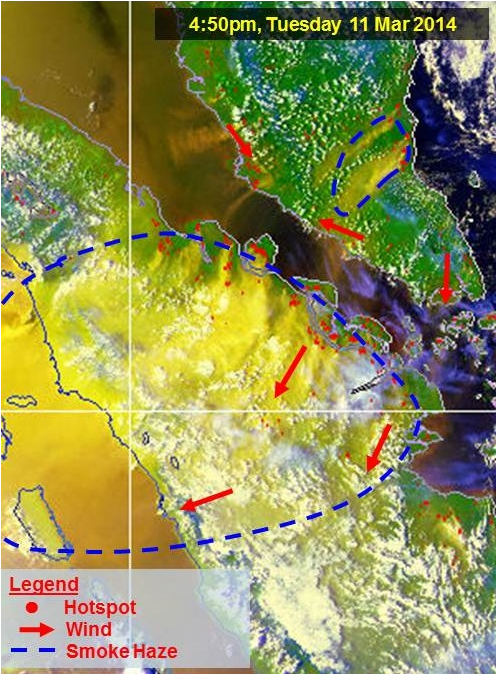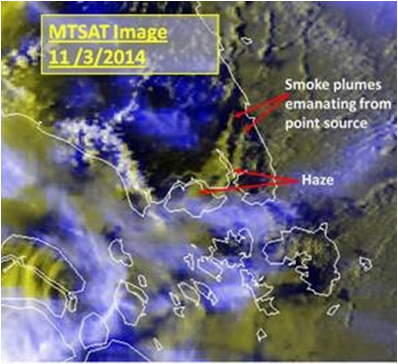The dry phase of the Northeast Monsoon, typically onsets in late January or February but in 2014, the onset was earlier in mid-January. In the 2014 Northeast Monsoon season, Singapore experienced two 27-day dry spells* during the period from 13 January to 8 February, and again from 17 February to 15 March. Both dry spells are the longest recorded on records since the 1960s, breaking the earlier record of 18 days in 2008.
One possible reason for the prolonged dry condition could be the source of the dry air mass over Singapore and the surrounding region. In the past dry phases of the Northeast Monsoon, air usually originates from the West Pacific maritime region. The air would be less dry because it would “collect” moisture as it moves across the sea areas towards Singapore. For 2014, the air mass over the region originated from the dry continental land mass.
The rainfall in February 2014 has set a new record for the driest month since 1869, with the rainfall total recorded as 0.2 mm at Changi climate station. This falls well below the previous record of 6.3 mm recorded in February 2010. February 2014 was also the windiest month in the last 30 years. The average daily wind speed for the month recorded at Changi climate station was 13.3 km/h, compared to the February average wind speed of 8.8 km/h. This too broke the previous record of 12.5 km/h in January 1985.
*A dry spell is defined as a period of at least 15 consecutive days with daily rainfall total of less than 1mm in many parts of the island.
The 5 longest dry spells (to date) since 1980 are:
| Year |
Duration (days) |
Dry spell periods |
| 2014 |
27 |
13 Jan – 8 Feb |
| 2014 |
27 |
17 Feb – 15 Mar |
| 2008 |
18 |
04 Feb – 21 Feb |
| 2005 |
17 |
18 Jan – 3 Feb |
| 1987 |
17 |
06 Feb – 22 Feb |
Based on our wind records of our climate station since 1984, the 5 strongest recorded average wind speeds are:
| Year |
Month |
Average Wind Speed (km/h) |
| 2014 |
Feb |
13.3 |
| 1985 |
Jan |
12.5 |
| 1987 |
Feb |
12.4 |
| 1990 |
Feb |
12.3 |
| 1989 |
Feb |
12.0 |

